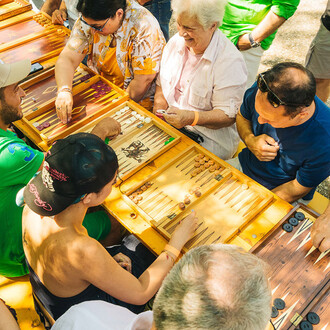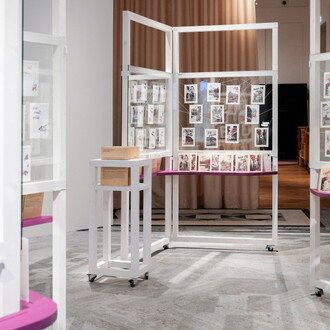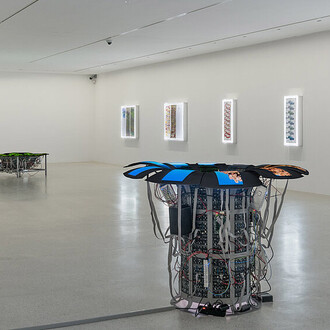Neither poet nor philosopher—although he studied both for a certain time—his practice and conception of language makes Lawrence Weiner (*1942) a key figure in the art of the 20th century and beyond. In his STATEMENT OF INTENT of 1969 he defines the foundations of the then-emerging conceptual art and displaces the concept from the artist’s head into the „stream of life“. A work comes into existence with its involvement of a „receiver upon the occasion of receivership“—i.e. as soon as it enters a public sphere.
Weiner’s primary materials of his sculptures are denoted as follows: “LANGUAGE + MATERIALS REFERRED TO”. This phrase reveals Lawrence Weiner’s conception of language itself as a material and furthermore as a material which again refers to materials, or as he declares by himself: “Art is the relationship of human beings to objects and the relationships of objects to objects in relation to human beings.” Materiality and referentiality, entangled in a dialectics which unfolds in the moment of the reception—this entails different linguistic concepts e.
Gottlob Frege (referentiality), Ludwig Wittgenstein (meaning as use in the language). The refusal of an attachment to a specific context and the insisting on a material reality provides Weiner’s works with generality and objectivity which enables them to enter any cultural context and to establish relations with it. Weiner’s involvement with the linguist Chomsky and the cognitive psychologist Piaget—on the one hand the universal grammar on the other hand the importance of the environment on linguistic development—was an early influence on his work, although his works should not be mistaken as implementation of these theories.
From the very moment of their making in the studio Weiner’s works are embedded in a continuous relation of translatability. This “conviction of basic translatability […] is situated in the expressive reference to the material”. The translations do not refer to an original text as authority, but to an extra-linguistic, empirical reality. The latter yet does only appear to be a primary text, eventually it is only possible to mediate its immediacy by the means of language. “Although the linguistic manifestation is authorized as such, it lays no claim to validity as something original, authentic, genuine, and immediate”,whereby Weiner elegantly succeeds in avoiding the arbitrariness of postmodernist thought without relapsing into a nostalgia of modernism at the same time.
The exhibition at Galerie Hubert Winter marks the 35th year of collaboration with Lawrence Weiner. In a contribution to the exhibition “Radical Attitudes to the Gallery” in 1977, Weiner concludes with the following sentence:
The Concept (Idea) Of Endeavor (Work) Without a Commitment (Political) Is Not a Reasonable Assumption.
One could take this statement as an impetus to read the sculptures on view in their political dimension. JUST IN TIME does not only open up the interval of timeliness, but rather is able to grasp our current social and political environment. From the impending firing of a spark (SPARK TO FLAME) to disoriented exposedness (CAST ADRIFT UPON THE SURFACE OF THE WATER)—possibilities of ambiguous readings unfold. Do we desert the sinking ship, are we literally going overboard? Elements of nautical language are recurring components of Weiner’s works and are entangled with the juridical language, hence we could ask ourselves if we should consider ALL ABOVE BOARD in its meaning as an idiom—„in a legitimate, honest, and open way“. It is a matter of „the relationship of human beings to objects and the relationships of objects to objects in relation to human beings“, hence we could ask ourselves after all if JUST IN TIME is not only reflecting timeliness and politics, but also in a certain way a future (in time) and juster horizon of possibilities.
„And if I could keep the work at the point where there are ways one could see the work, instead of there are ways one should see the work, I would have succeeded in making art that was viable for my times.“ Quod erat demonstrandum.
















